

1163-1250
Front facade (west facade)Located in the center of "old" Paris on the Île-de-la-Cité, Notre Dame is flanked by two branches of the Seine River. Like many Gothic cathedrals, it is named for the Virgin Mary, although it was built on a site where two churches had once been, one to the Virgin and one to Saint Stephen. The door of the south transept is called the Saint Stephen portal and in its tympanum records events in that saint's life. | ||

|
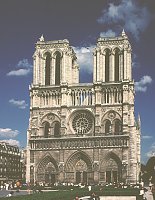
|
The original construction of the Notre Dame is the embodiment of the vision of Bishop Maurice-de-Sully, known for his sermons as a subdeacon and eventually the elected bishop in 1160. As bishop, he was able to accumulate the resources for the construction of this huge new cathedral. |
View from the southeast and southThis large church is about 140 yards long (127 meters). The towers rise to a height of about 226 feet. |
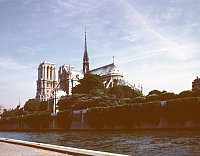
|
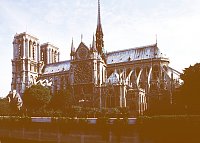
|

|
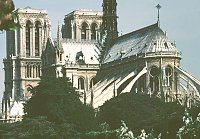
|
Views of the apse and flying buttresses |
Views from the south and southeastSee this page for additional images of the South transept. |
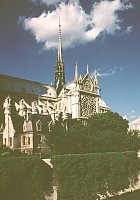
|
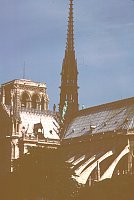
|
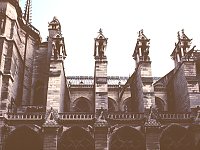
|
The nave buttressesThe flying buttresses of the nave date from the 13th century while those of the chancel date from the 14th century. | |
The spire and water spoutsAt the crossing (or intersection of the transept and nave) a spire of 315 feet rises. It was reconstructed by Viollet-le-Duc and is built of wood encased in lead. The water spouts, carved in grotesque animal forms, project from the gutters to convey water from the roof and away from the side of a building. |

|
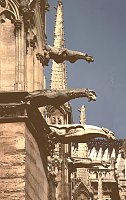
|
 Click here to return to index of art historical sites.
Click here to return to index of art historical sites.
 Click here to return to index of artists and architects.
Click here to return to index of artists and architects.
 Click here to return to chronological index.
Click here to return to chronological index.
 Click here to see the home page of Bluffton University.
Click here to see the home page of Bluffton University.

